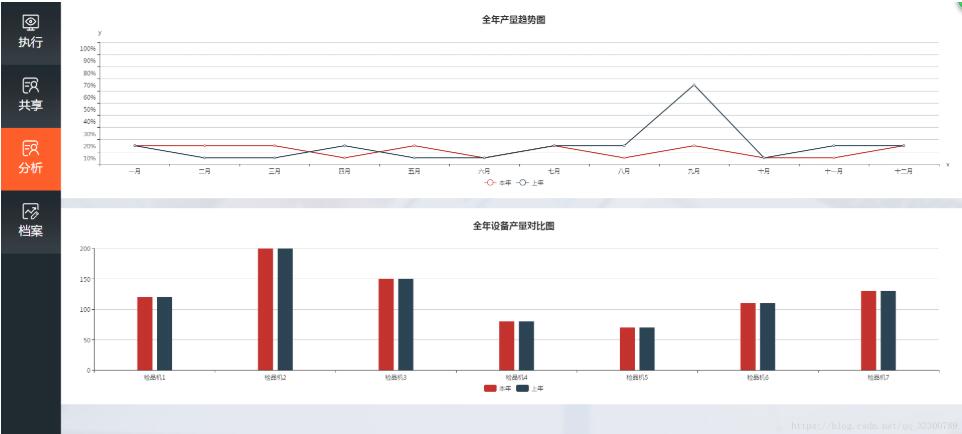Java讀取.properties配置文件的幾種方式
Java 開(kāi)發(fā)中,需要將一些易變的配置參數(shù)放置再 XML 配置文件或者 properties 配置文件中。然而 XML 配置文件需要通過(guò) DOM 或 SAX 方式解析,而讀取 properties 配置文件就比較容易。
介紹幾種讀取方式:
1、基于ClassLoder讀取配置文件
注意:該方式只能讀取類路徑下的配置文件,有局限但是如果配置文件在類路徑下比較方便。
Properties properties = new Properties(); // 使用ClassLoader加載properties配置文件生成對(duì)應(yīng)的輸入流 InputStream in = PropertiesMain.class.getClassLoader().getResourceAsStream('config/config.properties'); // 使用properties對(duì)象加載輸入流 properties.load(in); //獲取key對(duì)應(yīng)的value值 properties.getProperty(String key);
2、基于 InputStream 讀取配置文件
注意:該方式的優(yōu)點(diǎn)在于可以讀取任意路徑下的配置文件
Properties properties = new Properties(); // 使用InPutStream流讀取properties文件 BufferedReader bufferedReader = new BufferedReader(new FileReader('E:/config.properties')); properties.load(bufferedReader); // 獲取key對(duì)應(yīng)的value值 properties.getProperty(String key);
3、通過(guò) java.util.ResourceBundle 類來(lái)讀取,這種方式比使用 Properties 要方便一些
1>通過(guò) ResourceBundle.getBundle() 靜態(tài)方法來(lái)獲取(ResourceBundle是一個(gè)抽象類),這種方式來(lái)獲取properties屬性文件不需要加.properties后綴名,只需要文件名即可
properties.getProperty(String key); //config為屬性文件名,放在包c(diǎn)om.test.config下,如果是放在src下,直接用config即可 ResourceBundle resource = ResourceBundle.getBundle('com/test/config/config'); String key = resource.getString('keyWord');
2>從 InputStream 中讀取,獲取 InputStream 的方法和上面一樣,不再贅述
ResourceBundle resource = new PropertyResourceBundle(inStream);
注意:在使用中遇到的最大的問(wèn)題可能是配置文件的路徑問(wèn)題,如果配置文件入在當(dāng)前類所在的包下,那么需要使用包名限定,如:config.properties入在com.test.config包下,則要使用com/test/config/config.properties(通過(guò)Properties來(lái)獲取)或com/test/config/config(通過(guò)ResourceBundle來(lái)獲取);屬性文件在src根目錄下,則直接使用config.properties或config即可。
下面附上幾種方式的測(cè)試代碼,僅供參考:
package com.test.properties;import java.io.BufferedInputStream;import java.io.File;import java.io.FileInputStream;import java.io.IOException;import java.io.InputStream;import java.util.Enumeration;import java.util.Properties;import org.springframework.core.io.support.PropertiesLoaderUtils;/** * * @ClassName: TestProperties * @Description: 獲取配置文件信息 * @date: 2017年11月25日 上午10:56:00 * @version: 1.0.0 */public class TestProperties { /** * * @Title: printAllProperty * @Description: 輸出所有配置信息 * @param props * @return void * @throws */ private static void printAllProperty(Properties props) { @SuppressWarnings('rawtypes') Enumeration en = props.propertyNames(); while (en.hasMoreElements()) { String key = (String) en.nextElement(); String value = props.getProperty(key); System.out.println(key + ' : ' + value); } } /** * 根據(jù)key讀取value * * @Title: getProperties_1 * @Description: 第一種方式:根據(jù)文件名使用spring中的工具類進(jìn)行解析 * filePath是相對(duì)路勁,文件需在classpath目錄下 * 比如:config.properties在包c(diǎn)om.test.config下, *路徑就是com/test/config/config.properties * * @param filePath * @param keyWord * @return * @return String * @throws */ public static String getProperties_1(String filePath, String keyWord){ Properties prop = null; String value = null; try { // 通過(guò)Spring中的PropertiesLoaderUtils工具類進(jìn)行獲取 prop = PropertiesLoaderUtils.loadAllProperties(filePath); // 根據(jù)關(guān)鍵字查詢相應(yīng)的值 value = prop.getProperty(keyWord); } catch (IOException e) { e.printStackTrace(); } return value; } /** * 讀取配置文件所有信息 * * @Title: getProperties_1 * @Description: 第一種方式:根據(jù)文件名使用Spring中的工具類進(jìn)行解析 * filePath是相對(duì)路勁,文件需在classpath目錄下 * 比如:config.properties在包c(diǎn)om.test.config下, *路徑就是com/test/config/config.properties * * @param filePath * @return void * @throws */ public static void getProperties_1(String filePath){ Properties prop = null; try { // 通過(guò)Spring中的PropertiesLoaderUtils工具類進(jìn)行獲取 prop = PropertiesLoaderUtils.loadAllProperties(filePath); printAllProperty(prop); } catch (IOException e) { e.printStackTrace(); } } /** * 根據(jù)key讀取value * * @Title: getProperties_2 * @Description: 第二種方式:使用緩沖輸入流讀取配置文件,然后將其加載,再按需操作 * 絕對(duì)路徑或相對(duì)路徑, 如果是相對(duì)路徑,則從當(dāng)前項(xiàng)目下的目錄開(kāi)始計(jì)算, * 如:當(dāng)前項(xiàng)目路徑/config/config.properties, * 相對(duì)路徑就是config/config.properties * * @param filePath * @param keyWord * @return * @return String * @throws */ public static String getProperties_2(String filePath, String keyWord){ Properties prop = new Properties(); String value = null; try { // 通過(guò)輸入緩沖流進(jìn)行讀取配置文件 InputStream InputStream = new BufferedInputStream(new FileInputStream(new File(filePath))); // 加載輸入流 prop.load(InputStream); // 根據(jù)關(guān)鍵字獲取value值 value = prop.getProperty(keyWord); } catch (Exception e) { e.printStackTrace(); } return value; } /** * 讀取配置文件所有信息 * * @Title: getProperties_2 * @Description: 第二種方式:使用緩沖輸入流讀取配置文件,然后將其加載,再按需操作 * 絕對(duì)路徑或相對(duì)路徑, 如果是相對(duì)路徑,則從當(dāng)前項(xiàng)目下的目錄開(kāi)始計(jì)算, * 如:當(dāng)前項(xiàng)目路徑/config/config.properties, * 相對(duì)路徑就是config/config.properties * * @param filePath * @return void * @throws */ public static void getProperties_2(String filePath){ Properties prop = new Properties(); try { // 通過(guò)輸入緩沖流進(jìn)行讀取配置文件 InputStream InputStream = new BufferedInputStream(new FileInputStream(new File(filePath))); // 加載輸入流 prop.load(InputStream); printAllProperty(prop); } catch (Exception e) { e.printStackTrace(); } } /** * 根據(jù)key讀取value * * @Title: getProperties_3 * @Description: 第三種方式: * 相對(duì)路徑, properties文件需在classpath目錄下, * 比如:config.properties在包c(diǎn)om.test.config下, * 路徑就是/com/test/config/config.properties * @param filePath * @param keyWord * @return * @return String * @throws */ public static String getProperties_3(String filePath, String keyWord){ Properties prop = new Properties(); String value = null; try { InputStream inputStream = TestProperties.class.getResourceAsStream(filePath); prop.load(inputStream); value = prop.getProperty(keyWord); } catch (IOException e) { e.printStackTrace(); } return value; } /** * 讀取配置文件所有信息 * * @Title: getProperties_3 * @Description: 第三種方式: * 相對(duì)路徑, properties文件需在classpath目錄下, * 比如:config.properties在包c(diǎn)om.test.config下, * 路徑就是/com/test/config/config.properties * @param filePath * @return * @throws */ public static void getProperties_3(String filePath){ Properties prop = new Properties(); try { InputStream inputStream = TestProperties.class.getResourceAsStream(filePath); prop.load(inputStream); printAllProperty(prop); } catch (IOException e) { e.printStackTrace(); } } public static void main(String[] args) { // 注意路徑問(wèn)題 String properties_1 = getProperties_1('com/test/config/config.properties', 'wechat_appid'); System.out.println('wechat_appid = ' + properties_1); getProperties_1('com/test/config/config.properties'); System.out.println('*********************************************'); // 注意路徑問(wèn)題 String properties_2 = getProperties_2('configure/configure.properties', 'jdbc.url'); System.out.println('jdbc.url = ' + properties_2); getProperties_2('configure/configure.properties'); System.out.println('*********************************************'); // 注意路徑問(wèn)題 String properties_3 = getProperties_3('/com/test/config/config.properties', 'wechat_appid'); System.out.println('wechat_appid = ' + properties_3); getProperties_3('/com/test/config/config.properties'); }}
到此這篇關(guān)于Java讀取.properties配置文件的幾種方式的文章就介紹到這了,更多相關(guān)Java 讀取properties 配置內(nèi)容請(qǐng)搜索好吧啦網(wǎng)以前的文章或繼續(xù)瀏覽下面的相關(guān)文章希望大家以后多多支持好吧啦網(wǎng)!
相關(guān)文章:
1. vue實(shí)現(xiàn)web在線聊天功能2. JavaEE SpringMyBatis是什么? 它和Hibernate的區(qū)別及如何配置MyBatis3. JavaScript實(shí)現(xiàn)頁(yè)面動(dòng)態(tài)驗(yàn)證碼的實(shí)現(xiàn)示例4. Springboot 全局日期格式化處理的實(shí)現(xiàn)5. Java使用Tesseract-Ocr識(shí)別數(shù)字6. 完美解決vue 中多個(gè)echarts圖表自適應(yīng)的問(wèn)題7. Python使用urlretrieve實(shí)現(xiàn)直接遠(yuǎn)程下載圖片的示例代碼8. SpringBoot+TestNG單元測(cè)試的實(shí)現(xiàn)9. 在Chrome DevTools中調(diào)試JavaScript的實(shí)現(xiàn)10. 解決Android Studio 格式化 Format代碼快捷鍵問(wèn)題

 網(wǎng)公網(wǎng)安備
網(wǎng)公網(wǎng)安備